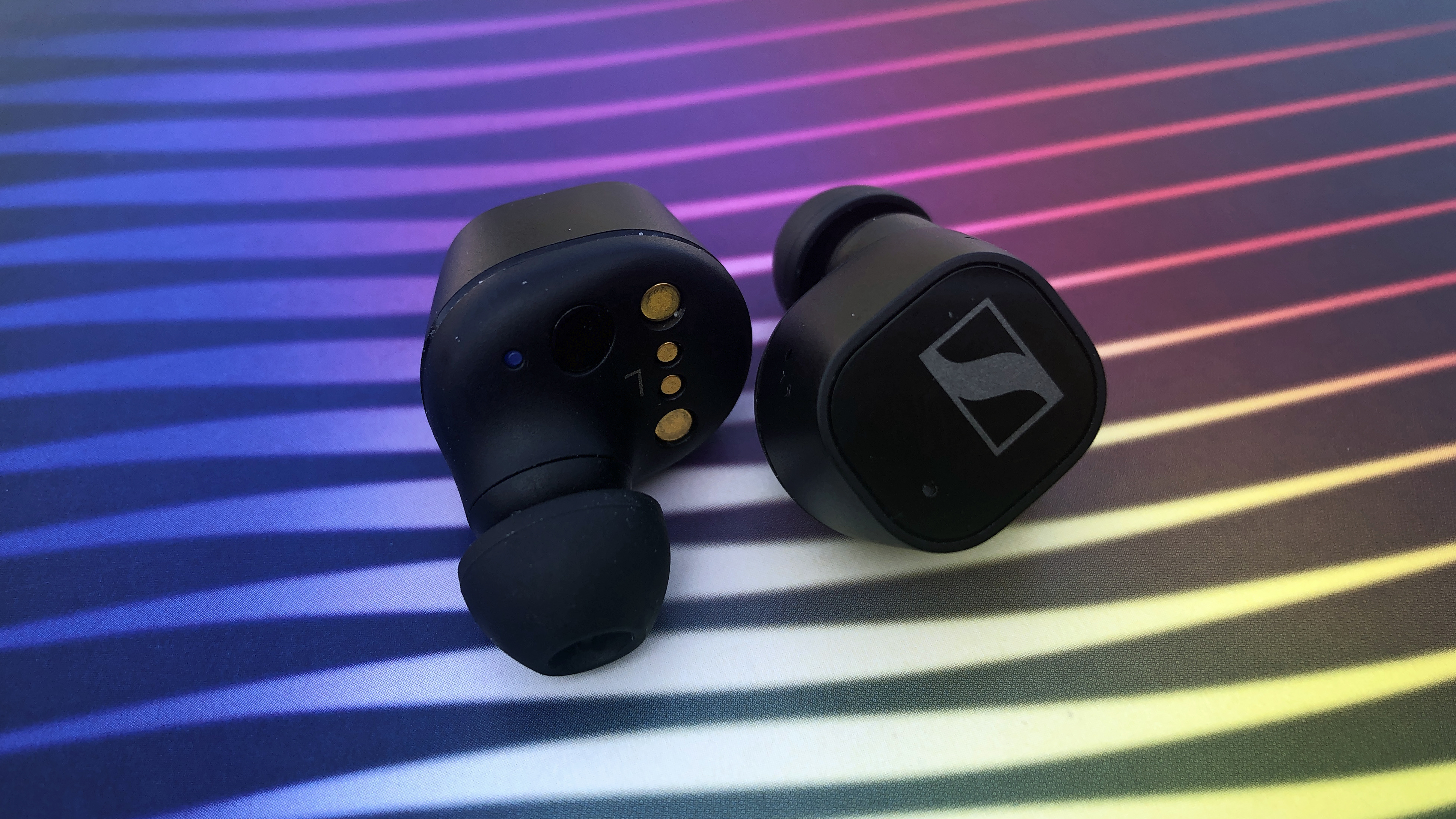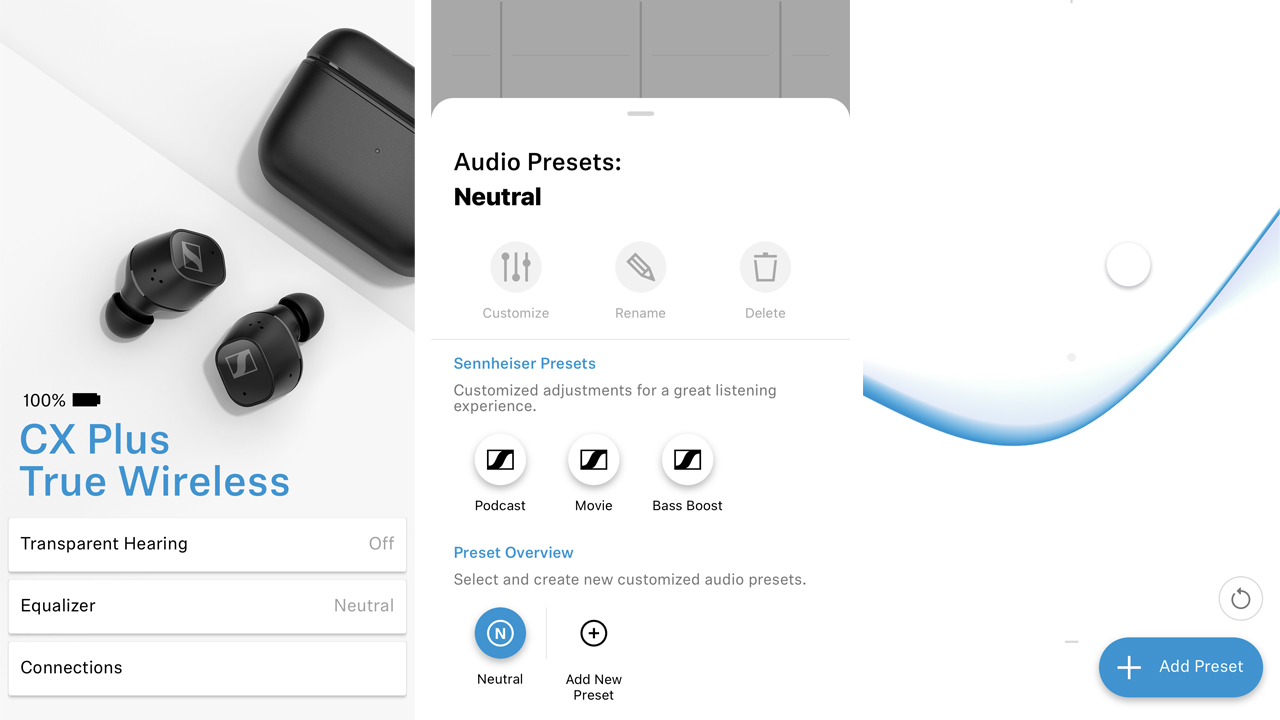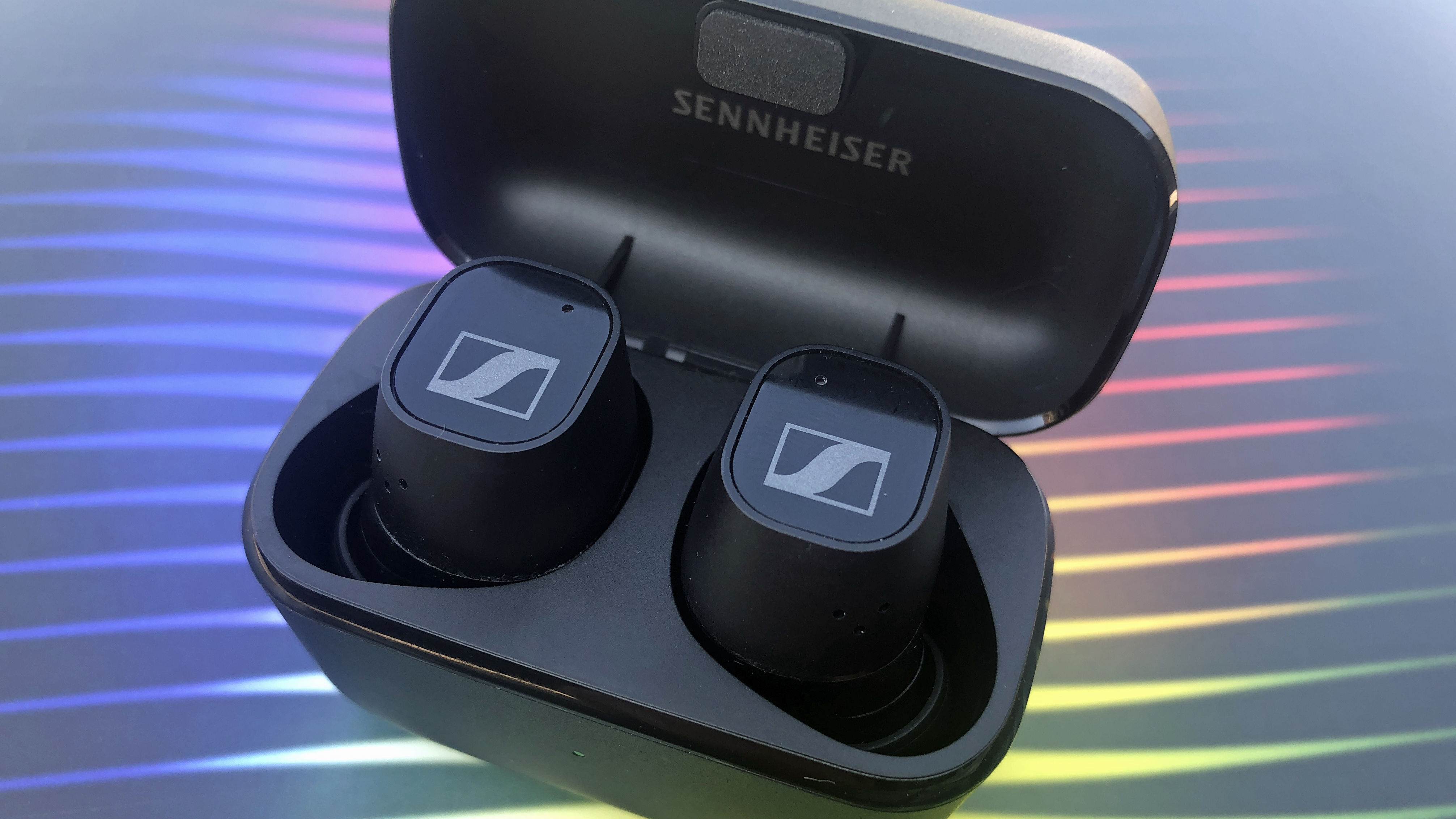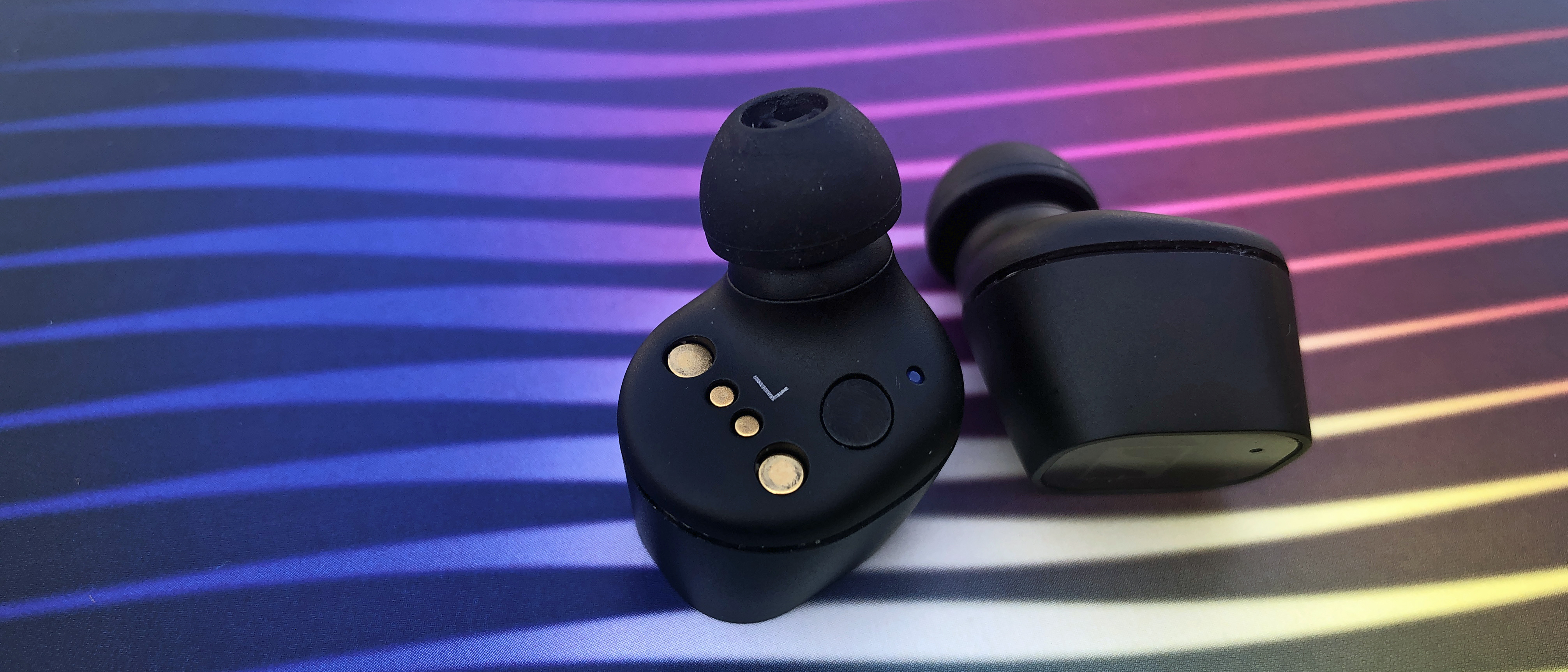TechRadar Verdict
Not what you’d call a complete success, but when the CX Plus True Wireless are good they’re very good indeed.
Pros
- +
Very decent specs at the price
- +
Balanced, confident sound
- +
Numerous (and effective) control options
Cons
- -
Not the most effective noise-cancelling
- -
Not too certain where rhythms are concerned
- -
Predictably ungainly design
Why you can trust TechRadar
One-minute review
Sennheiser’s on a bit of a true wireless charge at the moment - the products just keep on coming. These CX Plus True Wireless build on the (mostly successful) CX True Wireless platform by adding active noise cancellation and aptX Adaptive codec compatibility while keeping the price competitive. Job done, surely?
Well, sort of.
The sound will be familiar to anyone who’s used a pair of Sennheiser earbuds during the last year or two. They're tonally adept, confident in their own neutrality and as revealing as any price-comparable rival. They’re also prone to tripping over their own feet when asked to describe rhythms with any articulacy. And the CX Plus True Wireless’ USP, its active noise cancellation circuitry, isn’t as successful as we might have hoped either.
But they’re properly made, easy to control via any number of interfaces, have competitive-if-unremarkable battery life and, as we say, sound eloquent in almost every respect. So the very least these true wireless earbuds deserve is a spot on your short-list.

Sennheiser CX Plus True Wireless price and release date
- Available now
- $179 / £129 / AU$259.95
The Sennheiser CX Plus True Wireless are on sale now, and in the UK they’re priced at £129. In America, the asking price is around $179, while customers in Australia should expect to hand over AU$259.95. Various Sennheiser promo codes are available which are worth checking out for savings.
You don’t need to do much research to realise this price pits the CX Plus True Wireless up against some extremely well-regarded alternative designs. Just off the top of our heads, the Cambridge Audio Melomania Touch, Sony WF-SP800N or Panasonic RZ-S500W can all be had for this sort of money. So, even though Sennheiser’s a brand that seems confident in every product it launches, the CX Plus True Wireless have their work cut out.

Design and features
- Bluetooth 5.2 with aptX Adaptive
- Active noise-cancelling
- Worthwhile control app
It comes as a relief to report that the ‘Plus’ in this model name doesn’t indicate an earbud that’s any bigger than the (plenty big enough, thank you) CX True Wireless alternative that Sennheiser launched a while ago. No, ‘Plus’ in this instance indicates some additional features and functionality the stablemates do without.
The big news is active noise cancellation, augmented by a transparency mode (which Sennheiser’s calling ‘transparent hearing’) to increase the amount of external noise the wearer hears. Active noise cancellation is binary here - like Homer Simpson’s favourite light switch, it functions in both the ‘on’ or ‘off’ positions. And the adoption of Qualcomm’s aptX Adaptive wireless codec should mean high-quality audio, as well as seamless synchronisation between audio and video.

Elsewhere, it’s pretty much Sennhesier business as usual. The CX Plus True Wireless uses Bluetooth 5.2 for wireless connectivity, and once the digital audio information is on board, Sennheiser’s ‘TrueResponse’ 7mm transducer delivers the sound. Battery life is quoted at 24 hours all-in - that’s around eight hours from the buds themselves and another couple of charges in the reasonably tidy (59 x 34 x 43mm) charging case. They’ll go from ‘flat’ to ‘full’ in around 90 minutes, while 10 minutes on the power is good for an hour’s-worth of playback.
Each 6g earbud features a couple of microphones. They’re used for telephony and noise cancellation, of course, but also for interacting with voice assistants - Google Assistant and Siri are available. Control is also available via the big, responsive capacitive touch surface on each earbud - all the obvious stuff (‘play/pause’, ‘skip forwards/backwards’, ‘volume up/down’, ‘answer/end/reject call’ ‘summon voice assistant’ and ‘noise-cancelling on/off/transparent hearing’) is catered for.
It’s possible to customize these controls in the Sennheiser Smart Control App, which is one of the more stable and useful examples of the type. Here’s where you can fiddle with EQ settings (it’s just a three-band equaliser, but it’s represented in nice graphics), turn on ‘bass boost’ (and then rapidly turn it off again), turn active noise-cancelling on or off, and so on. There’s a slider to adjust ‘sidetone’, too - which, it turns out, is the level of your own voice you’ll hear during a phone call.

Audio performance
- Impressively neutral, convincing tonality
- Good definition of soundstage and instruments on it
- Don’t describe rhythms all that fluently
The CX Plus True Wireless are more than capable of handling a high-resolution stream from any of the services that provide them, so that’s as good a place as any to start. And with a 24bit/44.1kHz file of Sunglasses by Black Country, New Road streaming via Qobuz, the pros and cons of their performance are laid out pretty rapidly.
The ‘pros’ column is a fair bit more extensive. Most immediately impressive is the tonality Sennheiser has achieved here - with the EQ left well alone, the CX Plus sound natural, neutral in the best way, and completely convincing no matter if they’re describing a dry, scrubbed guitar or a close-mic’d drum-kit. The attack and decay of sounds is described confidently, detail levels are gratifyingly high, and you’re never left in any doubt as to the texture or timbre of individual instruments, no matter how hectic or complex the mix gets.
The low end is solidly punchy, nicely straight-edged on the way into and out of notes or hits, and carries enough information to prevent bass just thudding. The opposite end of the frequency range is absolutely as confident as it dares to be, but - again - detail levels are high and there’s enough substance to treble sound to stop them getting hard or shouty. And in between, where the remarkably mannered vocal in this tune sits, there’s an almost torrential level of information available - so the singer sounds just as idiosyncratic as he wants to.

The stage isn’t the most expansive ever served up by a pair of in-ear headphones, but there’s more than enough space available to give every element of the recording a little elbow-room. Integration of the frequency range is smoothly achieved, and there’s sufficient dynamic shove available to reveal the light and shade of a recording. Tiny harmonic variations are picked up on just as readily as big volume discrepancies.
It’s really only where rhythmic expression is concerned that the CX Plus True Wireless seem less than assured. Gimpy indie-jazz rhythms are one thing, but switch to something like Busting Out by Nona Hendryx - which is aimed squarely at the hips and below - and the Sennheiser shift to the very edge of their comfort zone. They’re not exactly flummoxed by the stridency of the rhythm or tempo, but they can’t quite give it the flow it’s so dependent on. And as a result, the presentation is slightly less than natural and slightly less than convincing. If you’re a fiend for the dancefloor sounds, the CX Plus True Wireless may not be your ideal partner.
The active noise-cancellation, too, is a success of the qualified kind. While there’s not an enormous amount of difference in the sound the Sennheiser make when the ANC is switched on or off - which puts them ahead of quite a few alternative designs - there’s not a huge difference in the amount of external noise you’re party to either. Ambient sounds are diminished, certainly - but if you’re expecting the uncanny blanket of silence some (admittedly more expensive) designs can deploy, you’ll be disappointed. You’ll still be aware of the plane, train or automobile in which you’re travelling.
Should I buy the Sennheiser CX Plus True Wireless?

Buy them if...
You enjoy a balanced, neutral sound
The ‘out of the box’ tonality of the Sennheiser is difficult to argue with.
You like to take control
Between voice control, touch control and app control, your will can easily be done.
You consume plenty of video content
AptX Adaptive means high-quality sound and fail-safe synchronization.
Don't buy them if...
You expect ‘ANC’ to mean ‘no external noise at all’
To be charitable, the noise cancellation here is very light-touch.
You enjoy getting all the way down
Rhythm management isn’t high on the list of these earbuds’ talents.
You’re on the small-eared side
Once again, Sennheiser fails to win the prize for ‘most discreet earbuds’.
- Check out our guide to the best wireless earbuds you can buy today
Simon Lucas is a senior editorial professional with deep experience of print/digital publishing and the consumer electronics landscape. Based in Brighton, Simon worked at TechRadar's sister site What HiFi? for a number of years, as both a features editor and a digital editor, before embarking on a career in freelance consultancy, content creation, and journalism for some of the biggest brands and publications in the world.
With enormous expertise in all things home entertainment, Simon reviews everything from turntables to soundbars for TechRadar, and also likes to dip his toes into longform features and buying guides. His bylines include GQ, The Guardian, Hi-Fi+, Metro, The Observer, Pocket Lint, Shortlist, Stuff T3, Tom's Guide, Trusted Reviews, and more.

